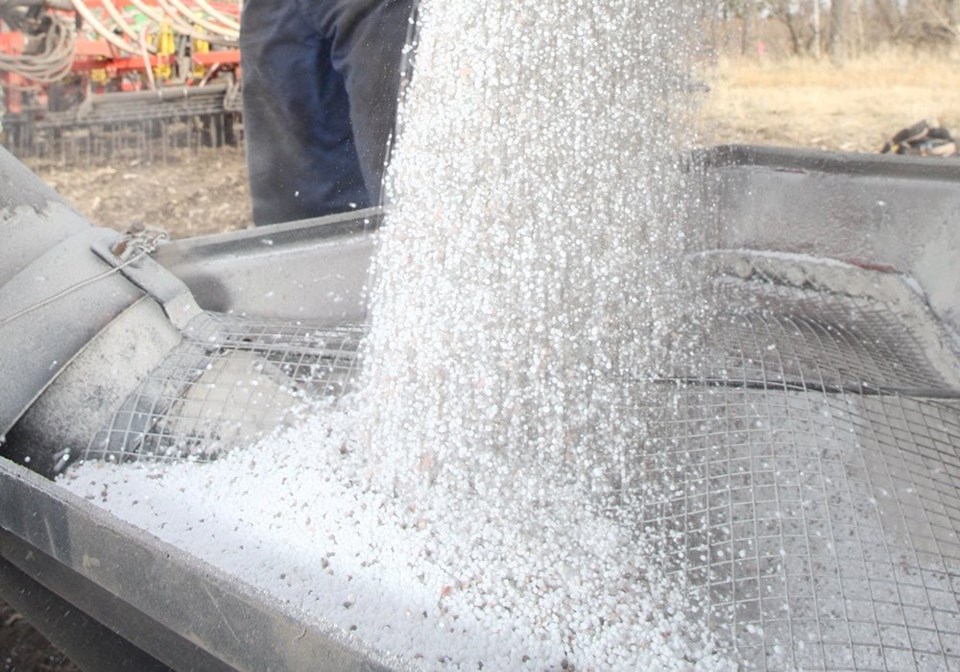Professor expresses concern over the amount of influence Environment Canada seems to have with Agriculture Canada
Concerned that emotion rather than empirical evidence is driving the federal government’s fertilizer emissions reduction target, researchers at the University of Saskatchewan have gathered baseline data they say Ottawa should use.
Stuart Smyth, associate professor in agricultural and resource economics, said he can’t find any evidence that Environment and Climate Change Canada used concrete information when setting the 30 percent reduction target.
“If they’re just looking at total pounds used… with the amount of land we’re farming the only way we’d achieve that is to farm less land or use less fertilizer,” he said. “There’s more fertilizer being used because we’re farming more acres.”
The study on Saskatchewan crop production and fertilizer use is currently going through the peer review process and is likely to be published this spring.
In the meantime, the province and others have the data and used it in discussions at the recent climate change meetings in Egypt and Montreal.
He said after being at one of those meetings he is nervous about the influence ECCC has over Agriculture Canada.
“Typically, Ag Canada has had far more ability to discuss policies, regulations, all those kinds of things that relate to the environmental aspects of agriculture. But I’m seeing that shift now and Environment Canada is now regulating the agricultural aspects of environmental regulations and I would say they don’t have the agriculture industry’s best interests at hand.”
Canada’s move to establish a target, even if it is voluntary, appears similar to the European Farm to Fork strategy that mandated a 20 percent reduction in fertilizer use and is designed to appeal to voters, Smyth said.
There is no science to back up that target or Canada’s.
“The lack of scientific references for fertilizer uses and emission reduction targets suggests that the targets are politically rooted, rather than empirically based,” said the study document. “The absence of empirical data to support emission reduction targets is concerning, as the lack of data and evidence, when coupled with the absence of reliable and complete baseline data, establishes the conditions for unrealistic economically and environmentally (sic) targets.”
The Saskatchewan study set out to get baseline data by comparing information on fertilizer use from the same fields in the periods 1991-94 and 2016-19. About 70 farmers in the major soil zones provided that information.
One of the key findings was conversion of 7.2 million acres of summerfallow to crop production within those two periods. Overall fertilizer use increased along with that, and total crop production rose from 1.3 billion bushels to 2.1 billion bu. or about 62 percent.
The additional acreage in production accounts for 44 percent of the increase in fertilizer use.
Farmers used more fertilizer but they applied it differently — moving toward in-crop and with-seed applications — and at different rates.
The move away from summerfallow also presented more opportunities for crops and soils to sequester carbon and reduce emissions.
“Using an emissions-intensity approach that considers the increase in crop production, the data indicates that although crop farmers in Saskatchewan might not have reduced their potential N2O emission levels per bushel of grain, they have significantly raised yields to keep up with the growing global food and commodity demand,” said the study.
“The 22 percent increase in Saskatchewan crop land due to the removal of summerfallow is a large contributor to the increase in fertilizer use, making the simple comparison of absolute fertilizer use between the periods irrelevant, as the 7.2 million acres of additional crop land between 1991-94 and 2016-19 accounts for 44 percent of the total increase in fertilizer use in Saskatchewan.”
Smyth said the percentage of nitrogen applied, based on yield, has increased 29 percent, highlighting the challenge of meeting the ECCC target.
“Without any government regulations, directives, mandates, targets, whatever you want to put in there, farmers have significantly increased their fertilizer efficiency,” Smyth said, and that’s missing from the discussion.
“It’s even missing in a lot of provincial capitals and it’s certainly missing in Ottawa bureaucracy,” he said. “Bureaucrats are simply not aware of what’s changed at the farm level. We need to do a better job of gathering this data and telling these stories to better inform policy makers about exactly what is going on.”




